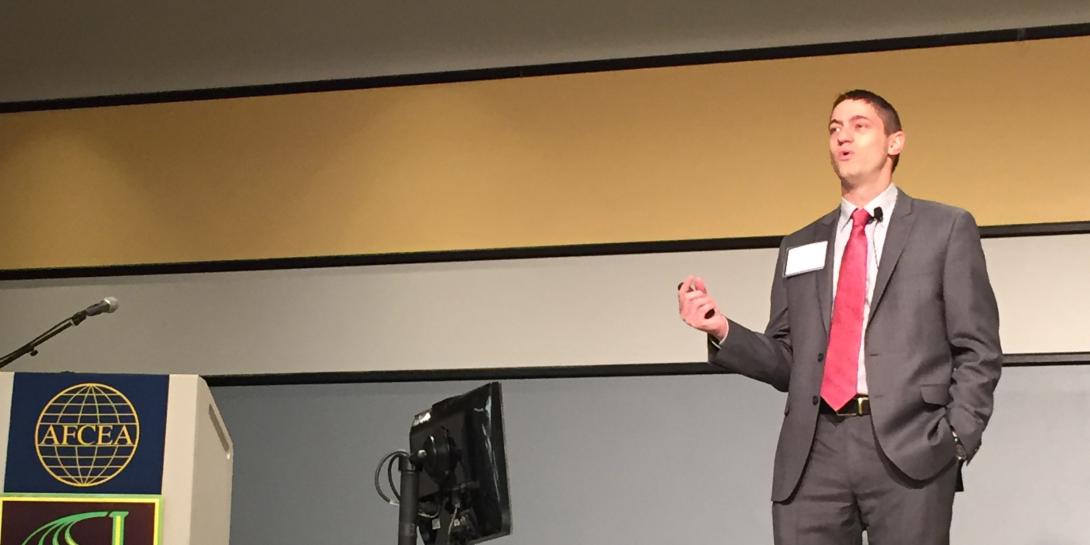Coexistence Is Goal of DARPA Spectrum Challenge
The Defense Advanced Research Projects Agency is hosting the world’s first collaborative machine-intelligence competition to overcome spectrum scarcity.
The world of spectrum is exploding and the Defense Advanced Research Projects Agency (DARPA) wants in. Paul Tilghman, program manager, Microsystems Office, DARPA, believes that collaborative use of spectrum can make this scarce resource available to everybody but many challenges exist.
“We are not nimble right now with spectrum. We need to move away from worrying about spectrum availability and think about how we can automate it,” Tilghman said during his morning keynote address at the AFCEA/GMU Critical Issues in C4I Symposium.
“We need to ensure the U.S. warfighter has sufficient spectrum access to support military capabilities,” Tilghman said. “We should be pursuing spectrum-efficient technologies and encouraging development of [spectrum-dependent] systems that can operate in diverse electromagnetic environments.”
The challenge is that even though most military operations have some sort of spectrum underpinning it, many of the communication systems do not work in tandem. “Our radios don’t talk to each other,” he said.
So how can we create true spectrum maneuverability? “Let’s make a game out of it,” Tilghman said.
DARPA is hosting a grand challenge, the company’s fifth, with the objective of creating a spectrum where all communications systems can work together and individually of each other. “The goal is to create a new paradigm that embraces heterogeneity through autonomy,” he said. “But how?"
The world’s first collaborative machine-intelligence competition to overcome spectrum scarcity, the Spectrum Collaboration Challenge (SC2), will feature five teams. Each team will need to move data through a spectrum “obstacle course.” Teams will be placed in the same geographic area with access to the same spectrum. Teams earn more points by accurately describing obstacles, such as incoming radio frequencies and interferences, so that other teams can avoid them. The team whose radio design most reliably achieves successful communication in the presence of other competing radios wins.
The first phase of the competition began in January when DARPA chose 30 contenders for the first of the three-phase competition. It is slated to culminate at the end of 2019 with a live match of finalists. In addition to 22 teams from academia and small and large companies, eight individuals have made it into the competition.
“The goal of our challenges is not the end state. It’s about bringing community together, path cutting, showing a new paradigm is possible and then letting future research come out of those efforts,” Tilghman concluded.





Comment
Terrorism
I think it is paramount to have some sort of radio frequency spectrum monitoring in place. There is a terror cell communicating in RF that has access to national or international arrays. The arrays need to be monitored 24/7 for concentracted beam activity, animated assault sequences and ammunition in quantum phase transition.
Comments